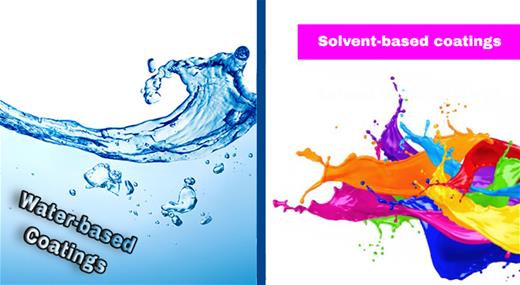1. General
Coatings typically contain four main components:
In the past, the dispersion medium was almost always an organic solvent. However, growing concerns over the dangers they pose to health have accelerated development of the technology in water-based coatings.
Solvent-Based Coatings
Fifty years ago, almost all protective coatings used were solvent-based. The organic solvents facilitated application, drying, and the formation of a durable, regular paint film. However, when the solvents evaporate, they release Volatile Organic Compounds (VOCs) into the atmosphere resulting in a strong odour and imposing a hazardous impact on the environment. Since then, increasingly strict environmental regulations have required paint manufacturers to dramatically reduce the levels of VOCs in their paints. Solvents are health hazards not only in production, but also during application, and after application, when the cured coating continues to release VOCs into the air (as evidenced by the lingering smell).
Water-Based Coatings
Currently, advances in paint technology mean that water-based paints (typically acrylics) are in many ways equal or superior to their solvent-based counterparts. High-quality, water-dispersed acrylic emulsions offer excellent durability, quick drying times, and the emission of far less odour. These advances have greatly increased the popularity of water-based coatings and they account for approximately 80% of paint sold in the residential marketplace today. Additionally, this class of paint has moved into all types of industrial applications, including protective coatings for steel and concrete.2. Performance Standards
Performance standards for protective coatings in civil engineering applications eg, EN 1504-2, “Surface protection systems for concrete” do not specify whether the coating should be solvent-based or water-based. They only specify the performance properties which must be met depending on the exposure conditions and the objectives of the asset owner. For example, an anti-carbonation protective coating needs to meet the requirements for resistance to carbon dioxide permeability and ease of water vapour transmission (breathability), both of which are easily achieved by water-based coatings, as are the requirements for durability and physical performance.
Local regulations and standards for building certification increasingly ask for environmentally-safe products eg products with low VOC for coatings. Only water-based coatings are able to meet these requirements.
3. Summary: Advantages of Water-based Coatings
The advantages of using waterborne coatings for both residential and industrial applications are summarised here:
